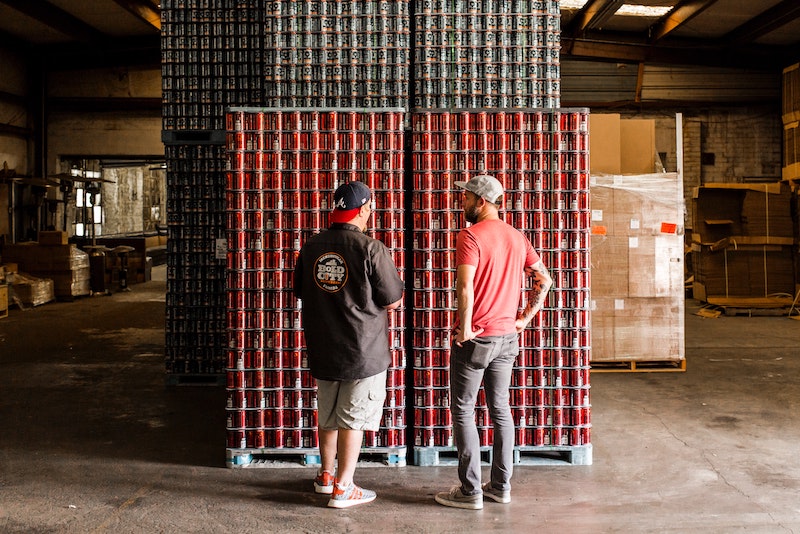How businesses can deal with delivery and distribution overwhelm

How to deal with delivery and distribution challenges
Every business has been affected in some way by the tumultuous political and social landscape since the new decade began. The effects of a global pandemic, conflict, rising inflation – we’re still living in unprecedented times, and multiple businesses are still trying to recover.
As such, many companies have seen a steep decline in purchases and orders, with some having to close their doors completely. Other businesses, on the other hand, are now facing overwhelming demand.
Some brick-and-mortar shops have seen their shelves stripped bare. They’re having to take lightning-speed measures to manage their eCommerce operations, as demand has soared far beyond their capacity to meet it.
The crush of demand has hit online grocery delivery companies particularly hard during the beginning of the COVID-19 pandemic. Ocado, for example, had to suspend all access to its website for a while to prepare for the distribution of products and ensure fair delivery slots.
“The amount of demand is simply unprecedented,” Ocado chief financial officer Duncan Tatton-Brown commented, likening the surge in website traffic to a “denial-of-service attack.” He said if the company “didn’t have capacity limits, it would be doing five to 10 times its sales volume.”
The effects of the pandemic are still very much being felt, with new political and social challenges impacting how we are all able to do business. Such a time demonstrates how important it is to have a robust delivery system in place to meet the ebbs and flows of demand.
If the above scenarios sound familiar to you and your business, read on. Here are our three top tips to navigate periods of increased orders and pivoting of business models.
1. Implement dynamic routes
Our very first recommendation is for businesses to implement dynamic route optimisation if they haven’t already.
Many businesses work on a fixed route basis. This raises significant challenges and limitations for those dealing with increased demand, or if they’re pivoting from B2B to B2C operations.
Dynamic routes allow businesses to plan routes daily, weekly, monthly, or however frequently they require a dynamic schedule. Systems such as MaxOptra utilise algorithms that produce efficient and reliable routes, fast. Taking into account traffic conditions and known roadworks, as well as vehicle capacities, live order volumes, and delivery time windows.
All of this supports businesses in avoiding any potential inefficiencies of fixed routes, reduces excess mileage, keeps customers happy, and as a result, cuts operational costs by up to 20%.
2. Track your routes and deliveries
One of the results of an overwhelming increase in orders is losing track of where deliveries are, or how delivery routes are performing.
For any business that is running a distribution fleet, it’s important to know what’s going on once the vehicles have left the depot.
Businesses can either link route optimisation systems to a vehicle telematics device. They can also utilise a driver app, such as what MaxOptra offers, to monitor what is going on in real-time via track and trace functionality.
This on-the-day visibility enables businesses to proactively deal with any delays or issues as soon as they occur. At the end of the day, this valuable data aids driver debriefing, route refinement, and management KPI reporting.
3. Automated email and SMS updates for customers
Another result of order overwhelm for businesses is having to communicate with a larger group of customers, which can quickly become complicated.
Keeping customers happy is a key goal for any business, and automated email and SMS updates can help businesses do this without an increase in workload.
These updates can include when a delivery is scheduled to arrive, when it’s on its way, and even when it’s nearby. Not only does this reduce the workload for businesses that often have to deal with customer inquiries, but it’s also incredibly beneficial for the end customer.
4. Implement a driver app
For paper-based operations, an increase in orders can increase documentation. This can quickly get messy.
We recommend that any business facing delivery overwhelm implements a driver app, such as the MaxOptra iOS and Android app. This will allow businesses to run a paperless operation whilst automatically pushing jobs to their drivers.
Businesses will also be able to track delivery and driver progress, whilst dealing with any issues and amends in real time.
For added peace of mind, our driver apps which incorporate ePod functionality allow drivers to log proof of delivery signatures, photos, and comments.
Overall, a driver app will streamline the entire delivery process – ensuring businesses can keep on top of their routes, drivers, deliveries, and documentation.
Preparing your business for changing demand will put you in a far more resilient and adaptable position for the future. This is especially critical to the delivery and distribution service you offer and is where we at MaxOptra can help. Learn more about how MaxOptra can support your business through its different seasons here.
Maxoptra System
© MaxOptra, 2023. Privacy Policy and Cookies
